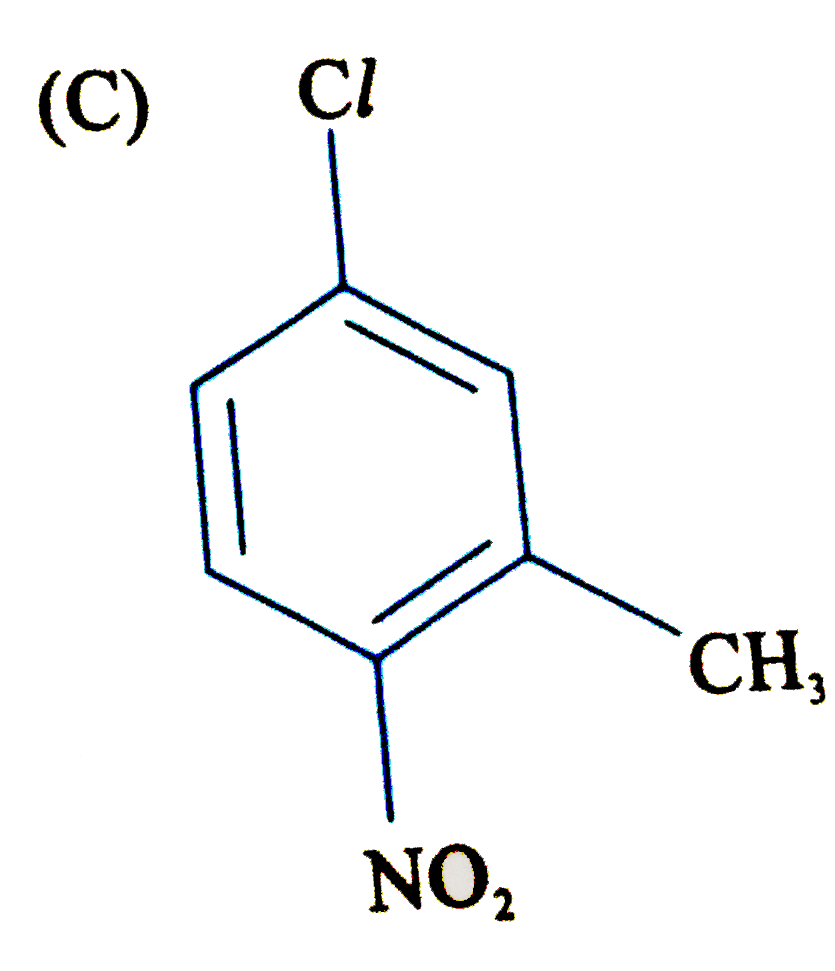p-Nitrotoluene on further nitration gives
3,4-dinitrotoluene
2,4-dinitrotoluene
2,4-dinitrobenzyl alcohol
2,5-dinitrotoluene
The correct Answer is:B
To solve the question of what p-nitrotoluene gives upon further nitration, we can follow these steps:
1. Identify the Structure of p-Nitrotoluene:
- p-Nitrotoluene consists of a toluene (C6H5-CH3) structure with a nitro group (NO2) at the para position relative to the methyl group (CH3).
- The structure can be represented as follows:
NO2∣CH3−C6H4
2. Understand the Nitration Reaction:
- Nitration involves the introduction of another nitro group (NO2) to the aromatic ring. This is typically done using a mixture of concentrated nitric acid (HNO3) and sulfuric acid (H2SO4).
3. Determine the Directing Effects of Substituents:
- The methyl group (CH3) is an ortho-para directing group and activates the ring for electrophilic substitution.
- The nitro group (NO2) is a meta-directing group and deactivates the ring.
4. Analyze the Positions for Nitration:
- Since the methyl group directs substitution to the ortho and para positions, and the nitro group directs substitution to the meta position, we need to consider the available positions:
- The ortho position to the nitro group is occupied by the methyl group.
- The para position to the methyl group is also occupied by the nitro group.
- The only available position for nitration is the meta position relative to the nitro group.
5. Draw the Product Structure:
- The nitration will occur at the meta position relative to the nitro group, leading to the formation of 2,4-dinitrotoluene. The structure can be represented as:
NO2|CH3−C6H3|NO2
6. Name the Product:
- The product formed is 2,4-dinitrotoluene, as there are two nitro groups at the 2 and 4 positions of the toluene ring.
Final Answer:
The product of the further nitration of p-nitrotoluene is 2,4-dinitrotoluene.
---
- p-Nitrotoluene consists of a toluene (C6H5-CH3) structure with a nitro group (NO2) at the para position relative to the methyl group (CH3).
- The structure can be represented as follows:
NO2∣CH3−C6H4
- Nitration involves the introduction of another nitro group (NO2) to the aromatic ring. This is typically done using a mixture of concentrated nitric acid (HNO3) and sulfuric acid (H2SO4).
- The methyl group (CH3) is an ortho-para directing group and activates the ring for electrophilic substitution.
- The nitro group (NO2) is a meta-directing group and deactivates the ring.
- Since the methyl group directs substitution to the ortho and para positions, and the nitro group directs substitution to the meta position, we need to consider the available positions:
- The ortho position to the nitro group is occupied by the methyl group.
- The para position to the methyl group is also occupied by the nitro group.
- The only available position for nitration is the meta position relative to the nitro group.
- The nitration will occur at the meta position relative to the nitro group, leading to the formation of 2,4-dinitrotoluene. The structure can be represented as:
NO2|CH3−C6H3|NO2
- The product formed is 2,4-dinitrotoluene, as there are two nitro groups at the 2 and 4 positions of the toluene ring.
The product of the further nitration of p-nitrotoluene is 2,4-dinitrotoluene.
Topper's Solved these Questions
Similar Questions
Knowledge Check
p-Chlorotoluene on nitration given
A B
B C
C D
D
Nitrobenzene on further excessive nitration gives
ATrinitrobenzeneBm-DinitrobenzeneCp-DinitrobenzeneDnitration does not occur.Nitrobenzene on further excessive nitration gives
ATrinitrobenzeneBm-dinitrobenzeneCp-dinitrobenzeneDAll of these
